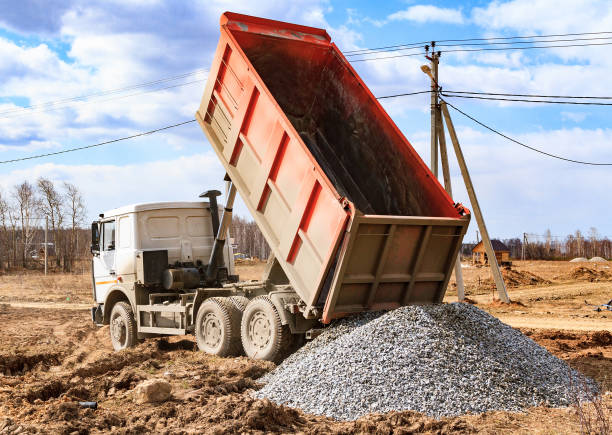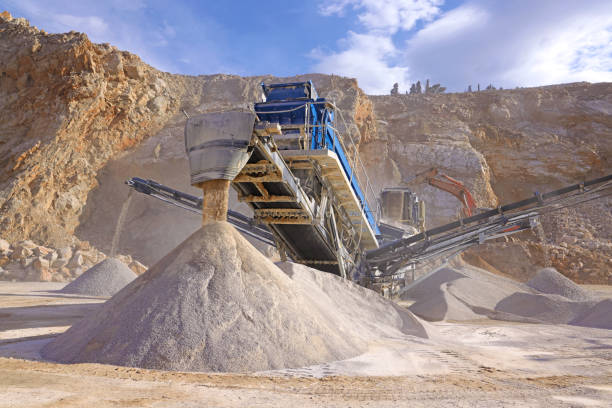In the field of construction selecting the best materials can be the difference between a successful and a failed an undertaking. From small-scale home improvements to huge commercial developments every aspect is important, particularly the type and quality of sand that is used. One particular material that stands out due to it’s versatility and flexibility is wash sand. The material is known for its smooth texture and clear composition It plays an essential part in both residential and commercial construction, although the applications differ based on the size and specifications of the construction.
This article will discuss the ways that washed sand can be utilized in commercial and residential construction projects, the benefits and the way it works with other aggregates, such as 1 2 gravel to produce lasting, durable results.

What Is Washed Plaster Sand?
Washed plaster sand can be described as a pure, clean sand which has been meticulously cleaned to eliminate impurities, such as silt, clay, and dust. The process of washing ensures uniform grain size and smooth texture, which makes it ideal for use in which a uniform surface is required, such as for rendering and plastering walls.
The main characteristics of washed Sand include:
- Fine texture, smooth and even, great for finishing plaster.
- Dust-free – The process of washing gets rid of dust and clay.
- Consistent quality – Assures an even distribution in mix.
- High binding strength helps create strong, durable surfaces.
This makes it an ideal option when working with contractors on commercial and residential projects but the manners in which it’s employed differs greatly.
Uses of Washed Plaster Sand in Residential Construction
For homeowners the majority of residential construction projects concentrate on comfort, aesthetics and efficiency. Sand that is washed and cleaned is essential to all of these goals particularly in the finalization of work.
1. Plastering Interior and Exterior Walls
The most popular use for washed sand for plastering in homes is for wall plastering. The smooth and clear grains guarantee a consistent texture, which is crucial to paint or decorative coatings. Walls are often a priority for homeowners who want flawless surfaces. The washed sand is the foundation for the smooth surface.
2. Flooring and Tile Bedding
In the residential areas, particularly bathrooms and kitchens tiles must be laid on a sturdy and level base. The sand that is washed, combined with cement, forms a solid and sturdy mortar bed that stops tiles from cracking or becoming uneven with time.
3. Landscaping and Aesthetic Finishes
Beyond floors and walls The sand, which has been washed, is frequently used in landscaping for residential. When paired together with 2 stones it could form the bed layer for patios, walkways or other decorative stone features. This mixture ensures adequate drainage, leveling, and stability for outdoor designs.
4. Repair and Renovation Work
Homeowners often need minor plastering repairs, whether to repair cracks or to refresh old walls. The use of sand-washed plaster is preferred in smaller projects since it blends seamlessly into the existing plasterwork, giving the same appearance.
Uses of Washed Plaster Sand in Commercial Construction
Commercial projects, like shopping malls, office complexes and hotels, need robustness, scalability and structural strength. While washed plaster sand performs similar purposes but its usage is broader due to the magnitude of construction.
1. Large-Scale Wall and Ceiling Plastering
In commercial buildings, large ceilings and walls require robust plaster that can stand up to environmental pressure as well as frequent repainting and the heavy use. A clean plaster sand is a guarantee that the large walls are able to withstand and durable, non-crack resistant plaster layers.
2. Concrete Production
Contrary to residential construction the washed plaster sand used for commercial projects is typically blended into concrete. While coarse aggregates such as 1/2 gravel offer structural strength, washed sand increases the working and finishing qualities of concrete, making it ideal for large-scale flooring as well as structural elements.
3. Masonry Work
Commercial projects are heavily dependent on masonry. From blocks to bricklaying. A mixture of plaster sand and washed cement makes mortar that is not just able to bond well but also enhances the strength of walls made of masonry that ensure they can stand up to higher loads and environmental challenges.
4. Finishing for Aesthetic Appeal
Lobbies for offices, hotels as well as retail spaces require a flawless finish. Sand that is washed helps create flawless, smooth surfaces required to meet the design standards and expectations of customers in areas with high visibility.
5. Infrastructure Support
Alongside surface finishes The washed sand of plaster often helps to build infrastructure for commercial construction projects. It is often used as underground utility beddings, pipe cushioning and also as a leveling base for flooring heavy which is always paired with coarser aggregates, such as 1 2 gravel to increase the strength and stability.

Residential and. Commercial applications: Most Important Differentialities
While both industries benefit from the pristine and consistent nature of washed sand, how the sand is used differs.
| Aspect | Residential Construction | Commercial Construction |
| Scale of Use | Small-scale, home-based, plastering and flooring | Walls, ceilings, and walls that are large-scale and structural mix |
| Primary Focus | Comfort and aesthetics | Strength, durability and the ability to scale |
| The role of Aggregates | Most often, it is paired with 1 or 2 pieces of gravel in landscaping | With 1 2 gravels in concrete, as well as bases that are large. |
| Common Projects | Plastering walls, tiles landscaping | Concrete production works, masonry, and infrastructure |
This study demonstrates how washed sand adapted to various project requirements.
The Role of 1 2 Gravel Alongside Washed Plaster Sand
The washed sand in the plaster provides the perfect finish 1 2 gravel is an integral role in the construction. It is composed of medium-sized broken stones (around half an inch size) typically employed in concrete mixes, drainage systems as well as base layers.
- In residential construction 1 2 gravel can be usually used in conjunction with plaster sand that has been washed to create patios, pathways as well as landscaping base.
- In commercial construction, the combination is vital for concrete production, as 1 2 gravel increases the strength of the concrete, while washing the sand helps in finish and workability.
Together, they create an equilibrating mix that provides the smoothness and strength.
Benefits of Using Washed Plaster Sand
No matter what type of project you are working on The washed plaster sand has numerous advantages:
- Reducing shrinkage cracks in the plaster.
- Improved longevity – Strengthens finish as well as mortar.
- Smooth finish – Offers an elegant, polished surface.
- Flexibility – Suitable for both large and small projects.
- Compatibility: Works flawlessly with aggregates such as 12 gravel.
Final Thoughts
Both commercial and residential construction projects are built with high-quality materials that provide the safety and durability of your project as well as aesthetics. The sand that is washed and polished a material that can bridge the gap between fine finishing requirements and structural demands. In the home, it provides the smooth walls, durable flooring, and the decorative landscaping that people want. For commercial projects it helps in large-scale plastering, solid construction, and even concrete production.
If paired by 1 and 2 gravel, sand is an effective combination that combines the strength and finishing and makes it a must-have for construction. No matter if you’re building a modest home or an impressive office building, selecting the washed plain sand option is a wise investment that will pay off for many the years to be.
Read More:
Eco-Friendly Debris Removal Service You Can Trust in Bucks County, PA & New Jersey

